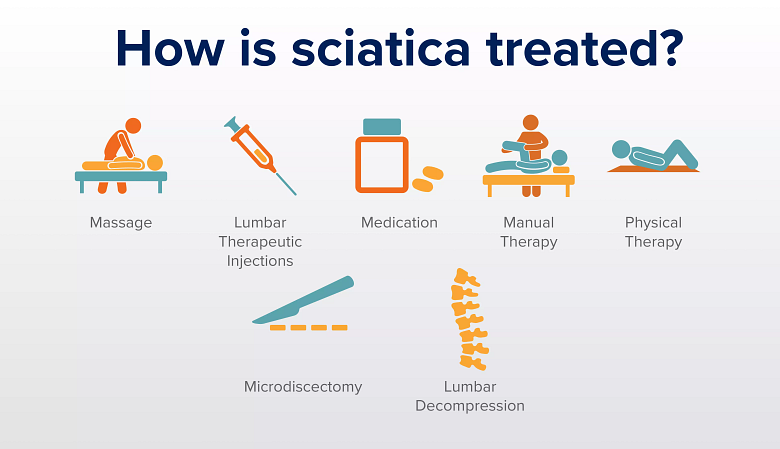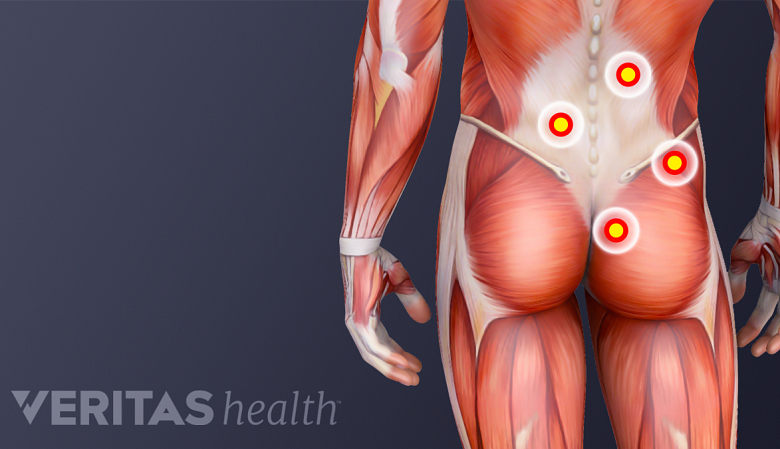From medicalresearch.com
Sciatica and lumbar pain continue to be among the most frequent causes of disability across the adult population. In 2020, approximately 619 million people worldwide suffered from low back pain. The World Health Organization (WHO) projects this figure to climb to 843 million by 2050.
These conditions frequently stem from lifestyle choices, aging, injuries, or spinal degeneration. Symptoms vary from slight discomfort to intense pain that can extend down the leg, often accompanied by numbness or muscle weakness.
Despite the variety of causes, the initial clinical response has often been the same. It starts with medication for pain, followed by imaging, and then consideration of invasive interventions for persistent cases.
However, a growing body of evidence suggests that many patients may find long-lasting relief through non-invasive methods when care is applied appropriately. As a result, healthcare providers are taking a second look at these therapies, re-evaluating their role in both early and ongoing management.
Why Non-Invasive Approaches Are Receiving Renewed Attention
Multiple factors drive the renewed focus on non-surgical treatments. First, there’s growing concern about the long-term consequences of relying heavily on opioids and other medications to manage chronic back pain.
While effective, opioids and many other types of pain relief medications can be addictive. This can even lead to opioid overdose deaths, which are on the rise in the US. According to an NCBI study, overdose deaths increased sharply from 2000 to 2021 among adults without a college education. Synthetic opioids have also entered the market, which has further increased the death rate from 2018 to 2021.
Second, advances in diagnostic imaging have made it easier to identify mechanical contributors to pain that might be treated without surgical intervention. Third, patients themselves are increasingly more informed and proactive, often seeking lower-risk solutions that cause minimal disruption to their daily lives.
Clinical practice guidelines now reflect this shift in perspective. Organizations recommend starting with non-pharmacologic, non-surgical options, including physical therapy and spinal manipulation, before turning to more invasive treatments. This change is supported by research indicating that for many patients, conservative care can yield similar or even better long-term outcomes.
How do non-invasive results for back pain compare with surgery?
Long-term studies have shown that for many cases of sciatica and lumbar pain, non-invasive treatments can produce outcomes comparable to surgery. Patients typically recover function and successfully manage their pain, avoiding the risks and lengthy recovery times linked to invasive surgeries.
Non-Invasive Treatments for Sciatica and Lumbar Pain
As people started looking for alternatives to medication and surgical treatment for sciatica and lumbar pain, many approaches started gaining traction. Here are some popular non-invasive methods for managing back pain:
Physical Therapy and Targeted Exercise
Physical therapy has become a cornerstone of conservative care for both sciatica and lumbar pain. A well-structured program aims to improve spinal stability, restore movement, and address muscular imbalances that often contribute to chronic symptoms. Over time, consistent therapy can reduce inflammation, improve nerve mobility, and help patients return to their normal activities with fewer flare-ups.
Treatment commonly starts with a comprehensive evaluation, including assessments of range of motion, posture, and strength. Based on the findings, therapists create individualized plans that may include core stabilization exercises, stretching routines, and posture retraining.
As noted by WebMD, some of the most popular exercises for sciatica pain include:
- Knee-to-chest stretch
- Standing hamstring stretch
- Pelvic tilts
- Glute bridge
- Lying gluteal stretch
- Clamshell exercise
- Bird dog pose
- Water aerobics
- Walking, either on land or in water
Physical therapy is also useful for educating patients about body mechanics and ways to avoid activities that aggravate symptoms. When performed regularly and tailored to the individual, these interventions can reduce the likelihood of recurrence and help patients manage their condition.
Spinal Decompression and Mechanical Relief
Spinal decompression therapy is another non-invasive option gaining attention for its ability to reduce pressure on spinal discs and surrounding nerves.
According to Phoenix Integrated Medical Centre, this technique is particularly relevant for individuals with herniated discs, degenerative disc disease, or foraminal narrowing. These are the conditions that frequently underlie sciatic pain and lower back discomfort.
The therapy involves controlled mechanical traction that gently stretches the spine. The goal is to relieve pressure within the disc space, enhance nutrient exchange, and create a more favourable environment for healing. Some patients experience immediate relief, while others observe their condition improving gradually over multiple sessions.
This kind of multi-pronged approach is becoming increasingly common in clinics specializing in non-surgical spine care. Care providers are increasingly recognizing the importance of tackling both the structural and functional elements of the condition.
Though not a solution for every case, spinal decompression has shown promise in select patient populations. It is beneficial to those who have not responded well to other conservative treatments but are not candidates or are unwilling to pursue surgery.
Can spinal decompression be used with other treatments?
Yes, spinal decompression is frequently incorporated into comprehensive treatment plans and can safely enhance other therapies. It’s commonly combined with physical therapy, massage, or anti-inflammatory injections. Coordination among providers ensures that these therapies work together without increasing the risk of over-treatment or side effects.
Manual Therapy and Mobilization Techniques
Manual therapy encompasses a range of techniques performed by trained clinicians to reduce pain, enhance mobility, and restore proper joint alignment.
Chiropractic adjustments, joint mobilizations, and soft tissue manipulation fall under this category. These therapies are particularly effective in cases where joint stiffness or muscular tension contributes to nerve compression or restricted motion.
Chiropractic care, for example, may involve spinal adjustments aimed at restoring joint function and relieving pressure on surrounding nerves. Osteopathic manipulative treatment (OMT) may combine stretching, resistance, and gentle pressure to achieve similar goals. These hands-on therapies are often most effective when used in conjunction with exercise and postural retraining.
Manual therapy can also help reduce muscle guarding, which is a common protective response in patients with chronic or acute pain. When these techniques are applied judiciously and based on a thorough evaluation, they can contribute significantly to symptom relief.
Is manual therapy safe for people with bone issues?
Manual therapy may not be recommended for patients with severe osteoporosis or existing vertebral fractures due to the risk of further injury. However, gentle mobilization techniques can sometimes be modified for safety. A thorough clinical evaluation helps determine whether this approach is appropriate for a given patient.
Neuromodulation and Nerve Stimulation
Another area of interest in the non-invasive treatment of back pain and sciatica is neuromodulation. The most common form used in outpatient settings is transcutaneous electrical nerve stimulation (TENS). This method delivers low-voltage electrical impulses through the skin, which can interrupt pain signalling and stimulate the release of endorphins.
Although TENS is often used for short-term relief, it can also be beneficial during acute pain episodes or in conjunction with other therapies. For some patients, it provides enough comfort to allow them to engage more fully in physical rehabilitation.
According to an NCBI study, the three primary techniques of TENS include:
- Conventional TENS: Employs high-frequency stimulation with a narrow pulse width and low intensity.
- Acupuncture-like TENS: Uses low-frequency stimulation with a longer pulse width and high intensity.
- Burst mode TENS: It combines features of conventional and acupuncture-like TENS.
Beyond TENS, newer approaches such as pulsed electromagnetic field therapy and high-frequency stimulation are also being researched. They can influence nerve activity and reduce chronic pain without the need for invasive procedures. While the evidence is still developing, these techniques show promise and are being explored as adjuncts to more traditional forms of care.
Acupuncture as a Complementary Option
Acupuncture, an ancient Chinese medical practice, is gaining recognition in pain management. It involves inserting fine needles into specific body points to stimulate nerves and muscles, though its exact mechanisms are still under investigation.
Several randomized controlled trials have suggested that acupuncture may help reduce both the intensity and frequency of back pain episodes. According to MedicalNewsToday, a randomized trial shows that patients receiving acupuncture report greater pain relief and improved mobility. Participants receiving the treatment experienced twice the reduction in pain and three times the reduction in chances of disability.
Acupuncture is often well-tolerated and can be safely integrated with other non-invasive therapies, such as physical therapy and manual treatment.
For patients seeking drug-free options, acupuncture may serve as a valuable addition to a broader treatment plan. It is especially valued by patients seeking a more holistic or minimally invasive approach to managing their condition.
Acupuncture is not universally effective and is still somewhat debated in certain clinical circles. However, it continues to be investigated as a viable adjunct in the non-surgical management of chronic spinal pain.
The reassessment of non-invasive treatments for sciatica and lumbar pain reflects a broader shift toward individualized, lower-risk care. While spinal decompression offers one promising route, it is far from the only option. Physical therapy, manual techniques, nerve stimulation, and behavioural interventions all contribute to a comprehensive approach that prioritizes patient safety and long-term recovery.
Not every treatment suits every patient. However, there’s increasing evidence supporting the benefit of customizing care plans to address both the physical and mental aspects of back pain. As clinical research continues to evolve, non-invasive care is likely to remain a central focus in the treatment of sciatica and lumbar conditions.
The information on MedicalResearch.com is provided for educational purposes only, and is in no way intended to diagnose, cure, or treat any medical or other condition. Some links may be sponsored. Products are not warranted or endorsed. Always seek the advice of your physician or other qualified health and ask your doctor any questions you may have regarding a medical condition. In addition to all other limitations and disclaimers in this agreement, service provider and its third party providers disclaim any liability or loss in connection with the content provided on this website.
https://medicalresearch.com/reassessing-non-invasive-treatments-for-sciatica-and-lumbar-pain/





